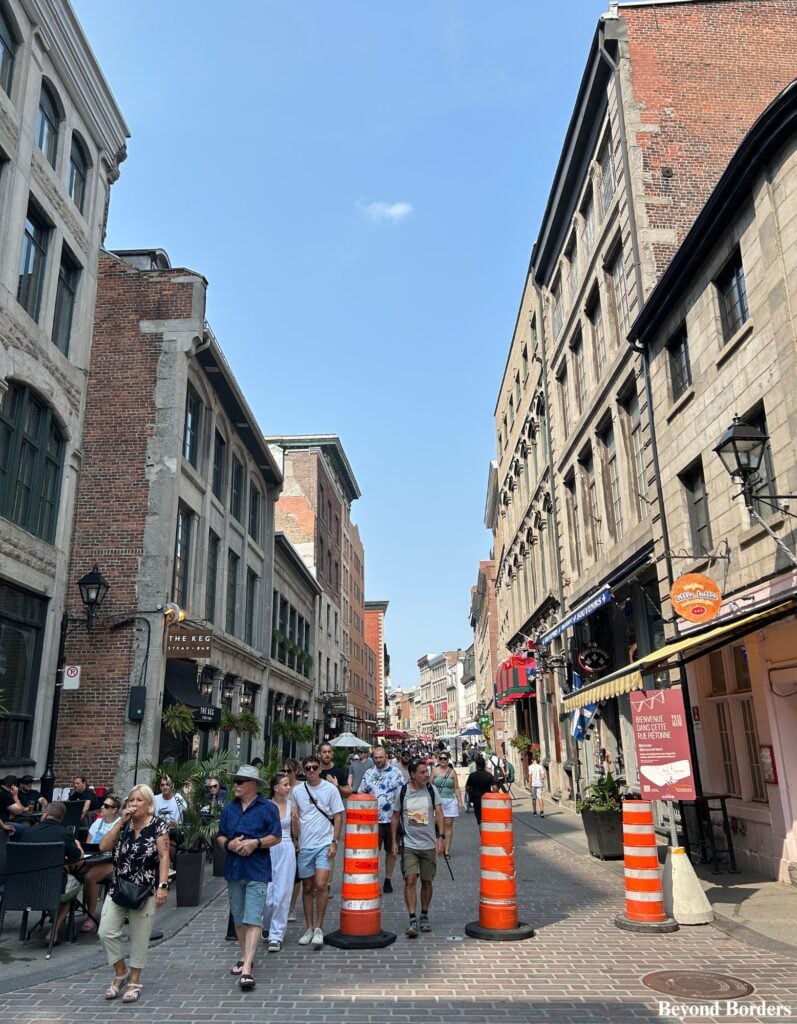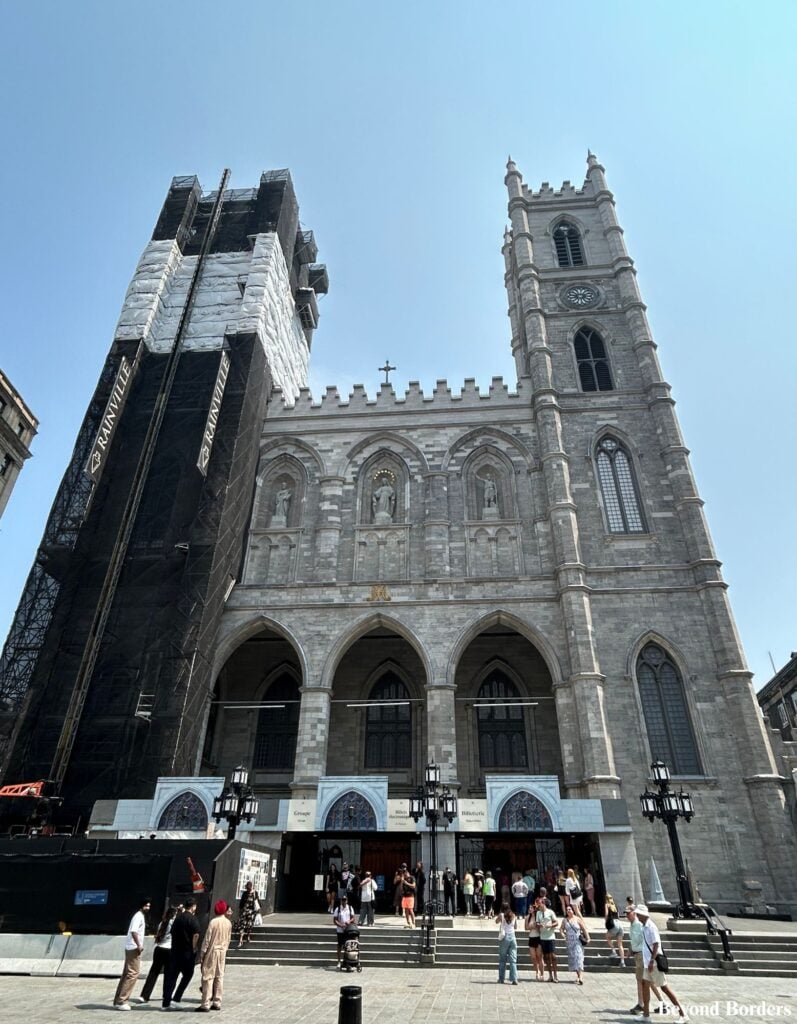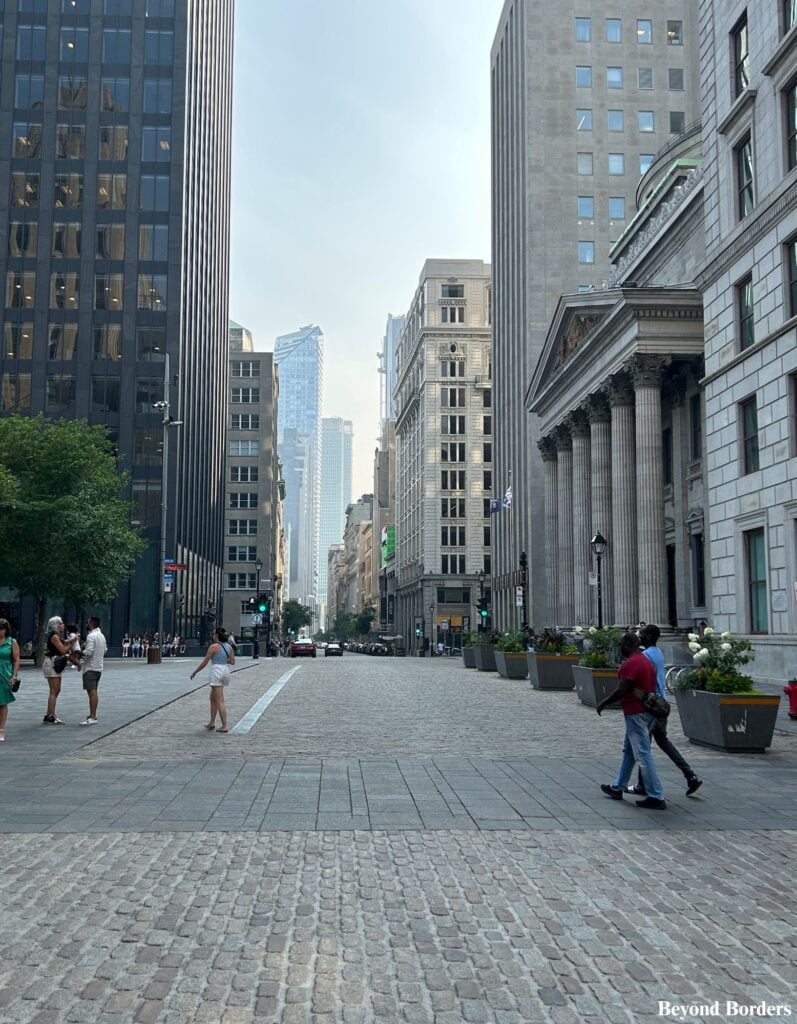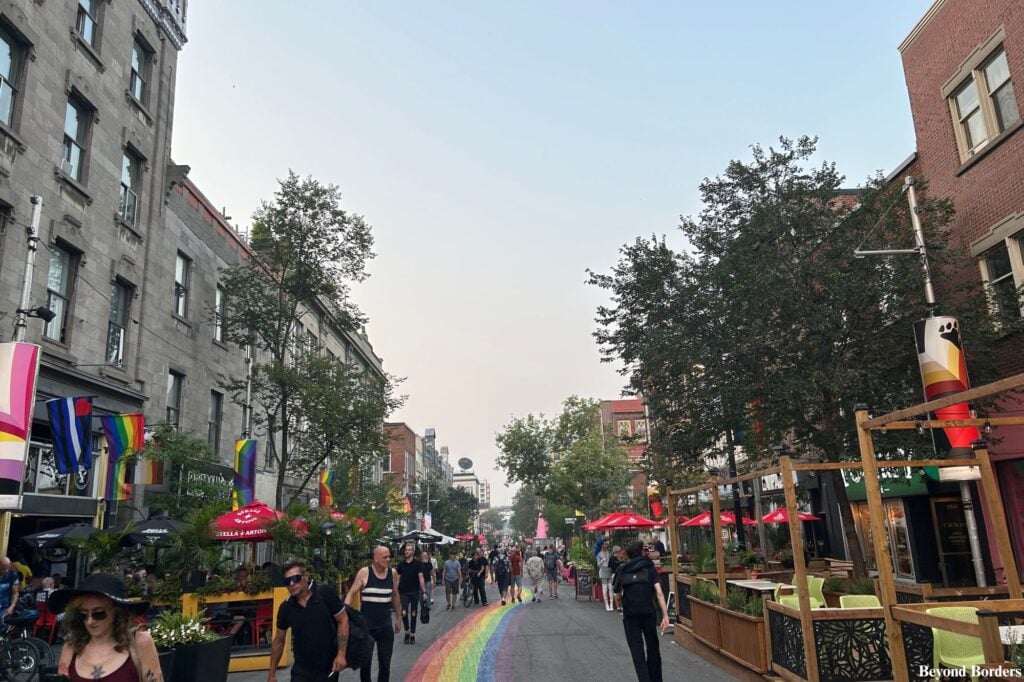Montreal is the most populous French-speaking city in North America, and its unique charm shines on its five most famous streets. From historic sites to vibrant nightlife, each street offers a different experience for foodies, shoppers, and history buffs. Ready to start your journey? Let’s uncover each of these iconic streets and what makes them a must-see for your first (or next) trip. These streets are featured in my 3-day Montreal itinerary, making it a perfect way to experience the best of Montreal.
Rue St. Paul
Rue St. Paul is one of the oldest streets in Montreal, founded in 1672 and named after Paul de Chomedey de Maisonneuve, the founder of Montreal. For several years, it was the main thoroughfare of the city. Rue Saint-Paul’s history is closely related to the development of the Port of Montreal, and it was a busy commercial center with warehouses and merchants.
What makes exploring Rue St. Paul so special is that it feels like walking through a European city, but in North America. The street is known for its picturesque atmosphere and is popular amongst both tourists and locals. It is filled with things to see and do, including shopping at boutiques, art galleries, and souvenir shops; choosing between an abundance of places to eat, including restaurants, cafes, and bars; and seeing notable landmarks such as Bonsecours Market. The street is completely closed to traffic to accommodate the large number of people who walk through it every day.
Due to the popularity of Rue St. Paul, it is included in several walking tours of Old Montreal, which I describe in my Montreal itinerary.


Rue Notre Dame
Rue Notre Dame is one of the most historically significant streets in the city and was founded in 1672, like Rue St. Paul. The street runs parallel to the Saint Lawrence River and has played a central role in Montreal’s development, becoming an essential street for government, commerce, and religion. While its entire span is not a tourist destination, the section within Old Montreal is a major hub of history, architecture, and culture.
Along Rue Notre-Dame in Old Montreal, you will see the Notre-Dame Basilica, the street’s most famous landmark. The basilica is a masterpiece of Gothic Revival architecture, known for its stunning and dramatic interior. The basilica is also a National Historic Site of Canada. You will also see Montreal City Hall (Hôtel de Ville de Montréal), a beautiful example of French Second Empire architecture, which has been the seat of the city’s government since the late 19th century.
Stroll down Rue Notre-Dame from the Notre-Dame Basilica and you’ll be greeted by a vibrant scene of shops and restaurants, perfect for an afternoon of exploring!


Rue St. Jacques
Rue St. Jacques (St. James Street in English) is a street in the city with a rich history as the city’s former financial center. While its early days date back to the founding of Montreal, its most significant period was in the 19th and early 20th centuries. For decades, Rue Saint-Jacques was the financial center of not just Montreal, but all of Canada. It was often referred to as Canada’s “Wall Street” because it was lined with the head offices of major Canadian banks, insurance companies, and brokerage firms. The imposing buildings along the street were a testament to the prosperity and influence of Montreal’s financial sector during that time.
As Toronto’s economic importance grew, the power of Montreal began to decline in the mid-20th century. Many of the major financial institutions eventually moved their head offices to Toronto, leading to a decline in the street’s status as a financial center. The key building you will see on Rue St. Jacques is the Bank of Montreal, right behind the Place d’Armes. As long as the doors are open, you are allowed to walk inside, no tickets needed. Another important building you will see at 360 Rue St. Jacques is the former Royal Bank of Canada headquarters. When it was completed in 1928, this building was the tallest in the British Empire.
Today, the area around Rue St. Jacques is known as the Quartier International, a modern business district. Even though Rue St. Jacques is not the financial center of Montreal today, the street (mainly in front of the Bank of Montreal) is still popular with locals, especially for couples who are getting married. On my walking tour of Old Montreal, my group saw three couples taking wedding photos in front of the bank; our tour guide told us that because the bank has a great deal of history and prestige, couples feel connected to the city’s past.
A walk down Rue Saint-Jacques is like walking down a historical time capsule of Canadian financial history, with magnificent architecture hinting at a period of immense wealth.


St. Laurent Boulevard
St. Laurent Boulevard is affectionately known as “The Main” and is one of Montreal’s most diverse streets. It’s a major north-south street that essentially divides the city into east and west, and it changes as it goes through different neighborhoods. It was declared a National Historic Site of Canada in 1996.
St. Laurent Boulevard’s fame comes from its historical role as a major thoroughfare and a home for successive waves of immigrant communities. For generations, it was a symbolic dividing line, with the predominantly English-speaking population to the west and the French-speaking population to the east. The street became a multicultural area of Montreal where these different communities, from Jewish and Italian to Portuguese and Greek, settled and built their lives.
When walking south to north, you’ll find: Old Montreal at the Saint Lawrence River; Chinatown, a small but busy area with traditional gates, restaurants, and shops; the Quartier des Spectacles, the city’s cultural center that is home to many theaters, concert halls, and festivals; the the Plateau Mont-Royal, a neighborhood famous for its nightlife with bars, art galleries, and restaurants; and Little Portugal & Little Italy as you continue north, reflected in the bakeries, cafes, and shops. The part of St. Laurent Boulevard between Sherbrooke and Duluth streets is especially known for its abundance of bars, clubs, and late-night dining options.
What makes St. Laurent Boulevard so significant in Montreal is how you walk through a timeline of the city’s history, multicultural identity, vibrant arts scene, and energetic nightlife.

Rue St. Catherine
Rue St. Catherine (also spelled Rue Sainte-Catherine) is a bustling, dynamic street that stretches for over 11 kilometers (7 miles) and serves as a hub for shopping, dining, entertainment, and culture. The atmosphere of Rue St. Catherine changes as you move along its length, from the bustling downtown core to the historic and cultural sections, reflecting the diversity of Montreal itself.
Rue St. Catherine Ouest (West) is a major hub for shopping. Here, you will find some of Montreal’s largest department stores and shopping centers, including Simons, The Bay, the Eaton Centre, and Complexe Desjardins. You’ll see a wide range of national and international brands, from high-end boutiques to popular chain stores. Rue St. Catherine Est (East), particularly between Saint-Hubert and Papineau streets, runs through Montreal’s vibrant Gay Village. During the summer, this part of the street is closed to vehicle traffic and becomes a lively pedestrian zone with patios, bars, and a festive atmosphere.
Montreal’s Rue St. Catherine is connected to the city’s famous Underground City, a network of tunnels known as the RÉSO (a homophone of the French word “réseau”, which means “network”). This allows people to shop, dine, and get around the downtown area comfortably, regardless of the weather. The RÉSO is vast, spanning over 33 kilometers (20 miles) and connecting over 1,700 stores, 200 restaurants, 40 banks, and even major attractions like the Bell Centre, home of the Montreal Canadiens, and Place des Arts, the city’s main performing arts center.
Rue St. Catherine is also easily accessible via the city’s metro system, with several stations running parallel to it. These include stations at Atwater, Place-des-Arts, Saint-Laurent, and Beaudry.

Conclusions
Each of these five streets has its distinct appeal: the European feel of Rue St. Paul, Rue Notre Dame’s access to Old Montreal, Rue St. Jacques’ historic role as a financial center, the different cultures that make up Saint Laurent Boulevard, and the vibrant shopping scene on Rue St. Catherine. Together, these streets tell the story of Montreal’s rich culture, showcasing the diverse history and unique character found in every corner of the city. As Canada’s second-largest city and the ninth-largest in North America, these five streets in Montreal offer a perfect snapshot of the city’s character through each street’s art, food, and history.
